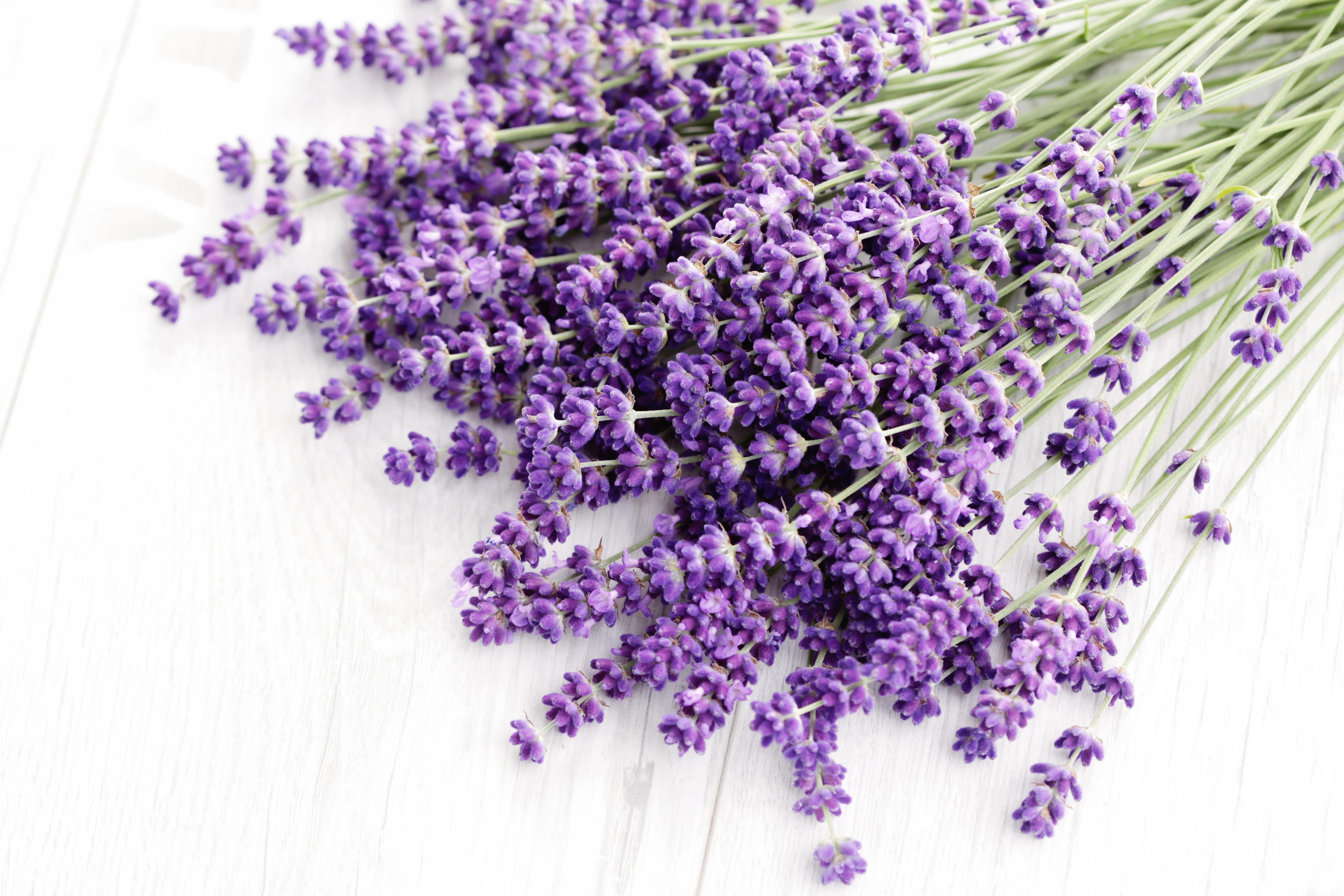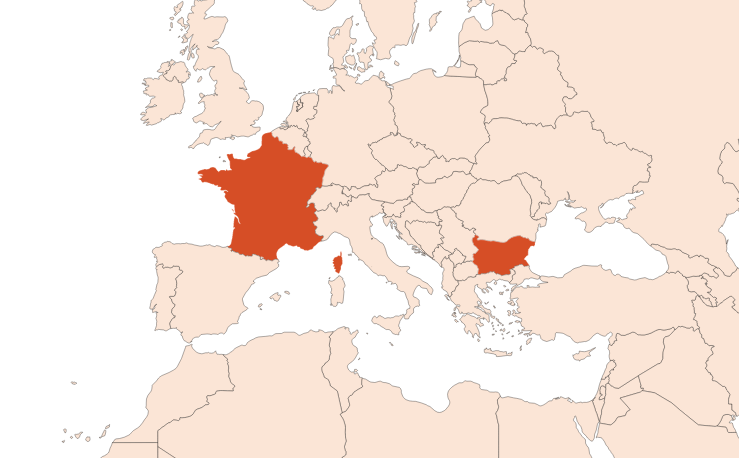
| Company | Ingredient Name | ID | Comments | Naturality | Certifications | Purity | Latin name | Treated part | Geographical origin | MOQ |
|---|---|---|---|---|---|---|---|---|---|---|
|
|
LAVANDIN Absolute | M_0053275 |
Visit website
|
Naturel | - | - | - | - | - | |
|
|
LAVANDIN HEXANE | F1718 |
Visit website
|
Absolue |

|
- | Lavandula × intermedia Emeric ex Loisel. | Sommité fleurie | France | - |
General Presentation
-
CAS N° : 8022-15-9 // 91722-69-9
-
EINECS number : 294-470-6
-
FEMA number : 2618
-
Appearance : Dark green paste
-
Density :
-
Volatility : Heart/Base
-
Price Range : €€€€
Physico-chemical properties
-
Optical rotation : Donnée indisponible
-
Vapor pressure : Donnée indisponible
-
Refractive Index @20°C : Donnée indisponible
-
Acid Value :
-
Flash Point :
Uses
Uses in perfumery :
Used in luxury perfumery for fresh water, lavender, fougere, amber, chypre and tobacco notes. Allows, in trace, to support the essential oil of lavender by providing tenacity.
Major Components :
- Linalyl Acetate
- Linalool
- Camphor
- Eucalyptol
- Coumarin (≈7%)
- 3-methoxyCoumarin (≈3%)
- Caryophyllene-beta
- Beta-Farnesene
- D-Limonene
- Beta-cis-Ocimene

Photo credits: ScenTree SAS
Botanical name :
Lavandula x intermedia Emeric ex Loisel.
Synonyms : Lavandula x hybrida E.Rev. ex Briq. // Lavandula x burnatii Briq.
Botanical profile :
Lavendin is a plant belonging to the Labieae family and the Lavandula genus.
Chemotypes :
It is a hybrid between lavender (Lavandula angustifolia) and aspic (Lavandula latifolia). Depending on the degree of hybridization of the two lavenders, four different lavenders result: Grosso, Abrialis, Sumian and Super. These varieties are differentiated by their rate of Camphor and Eucalyptol (in ascending order: Super, Grosso, Abrialis, Sumian) and their ester ratio (reverse order). Lavandin Grosso is the most produced because it grows much faster than the other varieties. The smell of lavandin is more camphorated than Lavender Absolute, but less than the aspic.
Extraction process :
Introduced in France in the 1920s, lavandin is a herbaceous sub-shrub, slightly higher than lavender, with evergreen leaves and flowers with three blue-purple spikes that blooms from July-August. The production of lavandin requires a certain altitude, located between 600 and 1500 meters.
The cultivation and extraction are done in August-September. The Lavandin extraction process is called ''ground green '' which means that it is done directly after cutting. Once they are ground, the plants are grouped in the extraction tank. The smell of the absolute is greener and cooler than if the plant was dried in the sun before extraction. A first extraction with hexane gives a concrete that is collected after the solvent has evaporated and the flowers are removed. After that, the concrete is diluted in an alcohol solution and subjected to a gradual glazing submitting the mixture at a temperature of 32 °F. During this process, the waxes precipitates and the mixture of alcohol and absolute are collected. The absolute is collected after evaporation of the alcohol.
The extraction yield is better for lavandin than for lavender because it contains more flower heads.
The lavandin absolute can be rectified by distillation to be obtained without terpene or colour.
Other comments :
Several markers of quality exist for lavandins. The ester level is one of them, and varies according to the lavandin varieties. The rate of eucalyptol and camphor is also a marker (for the Grosso, it is intermediate compared to other varieties).
Although it is more recent, Lavandin Grosso is the most produced.
Stability :
Solubility issues in perfumes
The esters identified in this raw material can form their corresponding acid in stability tests
The terpenes identified in this raw material can polymerize when they are oxidized
Regulations & IFRA
Allergens :
IFRA 51th :
This ingredient is restricted by the 51th amendment
Annexe I :
Some regulated synthetic ingredients are found in nature and in certain proportions in natural ingredients. This presence in nature has to be taken into account when calculating limits of use recommended by the IFRA. In case you do not know these concentrations, you can use the ones estimated by the IFRA. Here they are :
| List of regulated compounds contained in this ingredient | ||
|---|---|---|
| Regulated ingredient name | CAS N° | Estimated Concentration |
| Coumarin | 91-64-5 | 0,2 |
| Coumarin | 91-64-5 | 1,77 |
| Coumarin | 91-64-5 | 1,21 |
| Geraniol | 106-24-1 | 0,3 |
| Geraniol | 106-24-1 | 0,08 |
| Geraniol | 106-24-1 | 0,2 |
| alpha-Bisabolol | 515-69-5 | 0,64 |
| alpha-Bisabolol | 515-69-5 | 1,91 |
| alpha-Bisabolol | 515-69-5 | 1,91 |
| alpha-Bisabolol | 515-69-5 | 0,35 |
| alpha-Bisabolol | 515-69-5 | 0,03 |
| 1-Octen-3-yl acetate | 2442-10-6 | 0,2 |
| 1-Octen-3-yl acetate | 2442-10-6 | 1,09 |
| 1-Octen-3-yl acetate | 2442-10-6 | 0,3 |
| 1-Octen-3-yl acetate | 2442-10-6 | 0,3 |
| 2-Hexenal | 505-57-7 | 0,02 |
| 7-Methoxycoumarin | 531-59-9 | 0,01 |
| 7-Methoxycoumarin | 531-59-9 | 0,62 |
| 7-Methoxycoumarin | 531-59-9 | 0,37 |
| 7-Methoxycoumarin | 531-59-9 | 0,01 |


